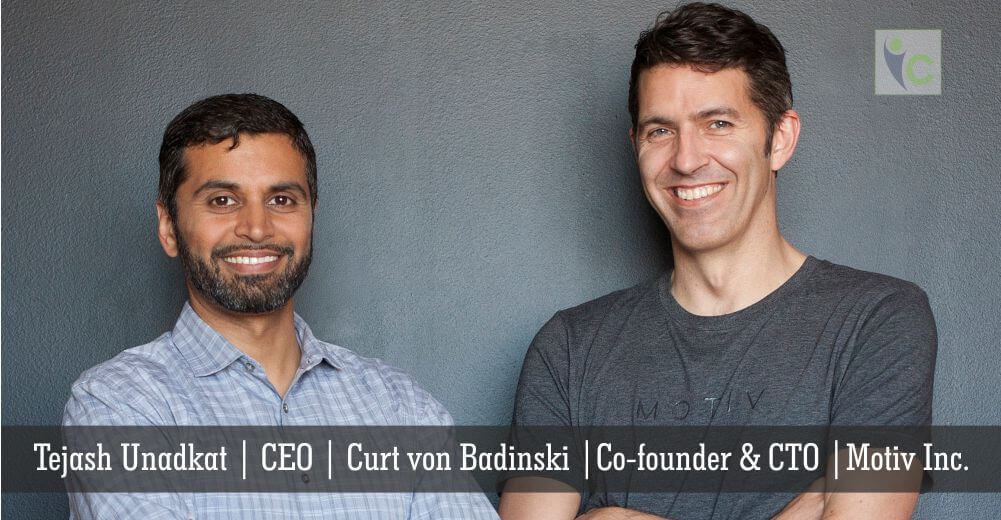Over the years, various solutions have come up to aid the differentially abled; but few were focused specifically for children with disabilities. Today, children with mobility impairments spend a lot of time sitting, which has been shown to lead to negative health outcomes in the long-term. Without the ability to walk, many children have a hard time getting adequate exercise and staying active.
The story of Trexo Robotics began in 2011 when its CEO Manmeet learned that his nephew Praneit had cerebral palsy and would not be able to walk. With a desire to help his nephew, Manmeet and his friend Rahul, CTO, decided to take the matters into their own hands. They both studied robotics at the University of Waterloo, so building a robot to help Praneit made a lot of sense. Thus Trexo Robotics was born in 2016.
Trexo Robotics designs and builds pediatric wearable robotic devices to help children with mobility impairments experience walking. Its’ product, Trexo Plus, is the only fully mobile robotic gait training platform that is commercially available for children. Trexo’s vision is to make this technology available for home use so that every child is able to walk regularly. Through this vision, they are looking to redefine mobility solutions for people of all ages and abilities, by building affordable and effective products that empower individuals to move and live a healthy life. Fundamentally, the company is driven by the belief that people should have access to empowering technologies.
The Accomplished & Innovative Leaders of Trexo
Trexo Robotics was founded in 2016, by Manmeet Maggu (CEO) and Rahul Udasi (CTO) as partners. They began experimenting with various robotics designs until the revolutionary Trexo device came to life. Today, the Trexo Plus is being prototyped and is set to be piloted in an upcoming trial with the Cincinnati Children’s Hospital. Praneit’s story has shaped the company’s values and mission to strongly focus on the children’s experience and to learn from its end users, including children, parents, and physiotherapists in order to build enjoyable and affordable products.
Feather in the Cap of Trexo
Together, the Trexo team has experience bringing over 200 products to market, taking these products from ideas to mass production. These and the founder’s experiences have rooted Trexo’s culture in continuous innovation. Manmeet strongly believes that robotics has the potential for the betterment of society. Rahul, on the other hand, is an enthusiast of innovative robotics and is driven by his curiosity.
Technologically, the company is at the frontier of robotic design. The Trexo team frequently tests its prototypes with various children who could benefit from this technology and learns from their experiences. Recently, following its participation in the Canadian Technology Accelerator Boston program, Trexo Robotics, won a MIT Enterprise Forum Startup Spotlight Award for their life-changing innovation.
Trexo Plus: Strengthening the Differentially Abled
Trexo Plus is the only fully mobile robotic device designed specifically for children to walk independently. Its unique design allows it to convert a passive walker into a fully powered robotic device that can be used anywhere. While starting as a physical therapy device, Trexo’s goal is to make this device accessible to children and their families at home so that they can experience walking outside of a clinic.
The designs are made with a child’s comfort and needs in mind, and children with various conditions are frequently invited to Trexo’s office to try out the device and provide valuable feedback. Ultimately, Trexo’s goal is to create a device that physical therapists trust, parents can afford and children love. There are currently no such devices available that can be used at home by children. This device may be used by children with conditions including cerebral palsy, muscular dystrophy, traumatic brain injury, spina bifida, spinal cord injury and other conditions which lead to mobility impairments.
They strongly believe that leveraging novel technologies can have a strong impact on the care of people with disabilities, as well as healthcare overall. For instance, 3D-printing has also allowed Trexo to test parts and identify potential sources of issues quickly, ensuring that when its device hits the market, it is of high quality. This type of rapid testing has also been essential in keeping the company sustainable and moving quickly. In the future, Trexo is considering integrating machine learning to improve the gait training of each child as progress is made, ensuring that the child continues to benefit from the use of the device.
Present & Future of Trexo & Medical Devices
The sad truth is that there isn’t much innovation happening in the accessibility and mobility space. This market is still frequently overlooked because there are significant barriers to entry. Trexo hopes that by showing people that with the usage of advanced technologies like robotics, one can help people in improving their lives and create a profitable business.
Positive changes are happening, and care providers are appreciating the value of innovative technologies to improve the quality-of-life of their patients. At the end of July 2018, Trexo will be placing its first unit for clinical testing at the Cincinnati Children’s Hospital. Additionally, it plans on deploying four more units before the end of 2018 for further evaluation. Trexo is currently preparing for FDA submission as well.










